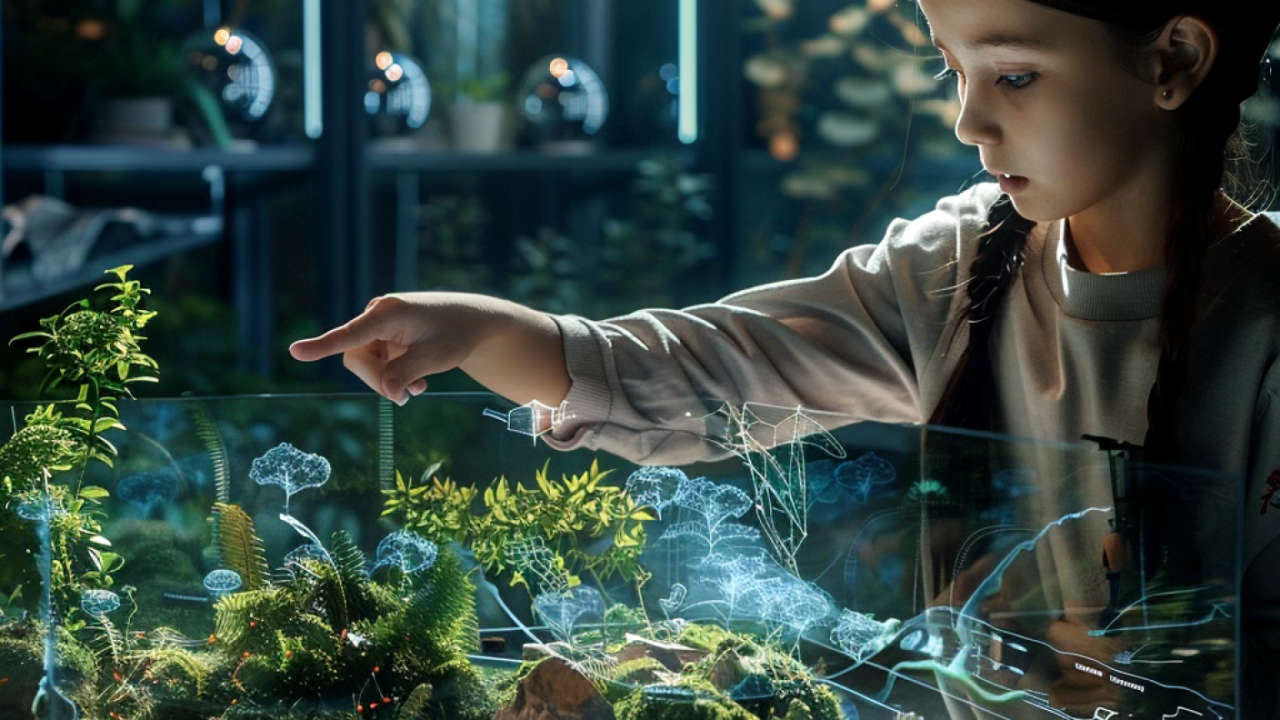Artificial Intelligence (AI) is revolutionizing education by creating interactive and engaging learning experiences, especially in the realm of environmental education. As the importance of understanding and preserving our natural world grows, AI is stepping in to make learning about nature more immersive, personalized, and impactful. Here’s how AI is transforming nature’s classroom.

Bringing Nature to Life with AI
AI-powered tools and applications are making it possible to explore the environment in ways that were previously unimaginable. Through virtual reality (VR) and augmented reality (AR), students can now embark on virtual field trips to diverse ecosystems, from rainforests to coral reefs, without leaving the classroom. These immersive experiences provide a deeper understanding of ecological systems and the importance of biodiversity.
Personalized Learning Paths: AI can tailor educational content to individual learning styles and paces. By analyzing student data, AI systems can adapt lessons to meet the specific needs of each learner, ensuring that everyone gains a comprehensive understanding of environmental topics.
Interactive Simulations: AI enables the creation of realistic simulations that allow students to experiment with different environmental scenarios. For example, students can simulate the effects of climate change on various ecosystems or test conservation strategies to see their impact in a controlled virtual environment.
Real-Time Data Integration: With AI, students can access and analyze real-time environmental data. This integration allows learners to study current environmental conditions, track changes, and understand the implications of human activities on nature. This hands-on approach to data analysis fosters critical thinking and problem-solving skills.

Enhancing Engagement and Retention
One of the biggest challenges in education is maintaining student engagement and ensuring information retention. AI addresses these challenges by making learning more interactive and fun.
Gamification: AI can incorporate game-like elements into educational content, turning learning into a rewarding experience. Students can earn points, badges, and rewards for completing tasks and quizzes, which motivates them to stay engaged and learn more effectively.
Virtual Assistants: AI-powered virtual assistants can provide instant feedback and support to students. These assistants can answer questions, offer explanations, and guide students through complex topics, making learning more accessible and less intimidating.
Collaborative Learning: AI facilitates collaborative learning by connecting students from different parts of the world. Virtual classrooms and AI-driven platforms enable students to work together on environmental projects, share insights, and learn from each other’s experiences.

Real-World Applications and Impact
The use of AI in environmental education extends beyond the classroom. By equipping students with a deep understanding of environmental issues, AI-driven education prepares them to become informed and proactive citizens.
Environmental Stewardship: Students who engage with AI-powered environmental education are more likely to develop a strong sense of environmental stewardship. They gain the knowledge and skills needed to advocate for sustainable practices and contribute to conservation efforts.
Career Preparation: As the demand for environmental professionals grows, AI-driven education provides students with the skills and knowledge necessary for careers in environmental science, conservation, and sustainability. This preparation ensures a future workforce capable of addressing complex environmental challenges.
Community Engagement: AI can also help extend environmental education to the broader community. Interactive exhibits in museums, nature centers, and public spaces can educate people of all ages about the environment, fostering a culture of awareness and action.
AI is transforming environmental education by creating interactive, personalized, and engaging learning experiences. By leveraging AI technology, educators can inspire a new generation of environmental stewards equipped with the knowledge and skills to protect our planet. Nature’s classroom, enhanced by AI, holds the promise of a brighter, more sustainable future.
By Stanislav Kondrashov



